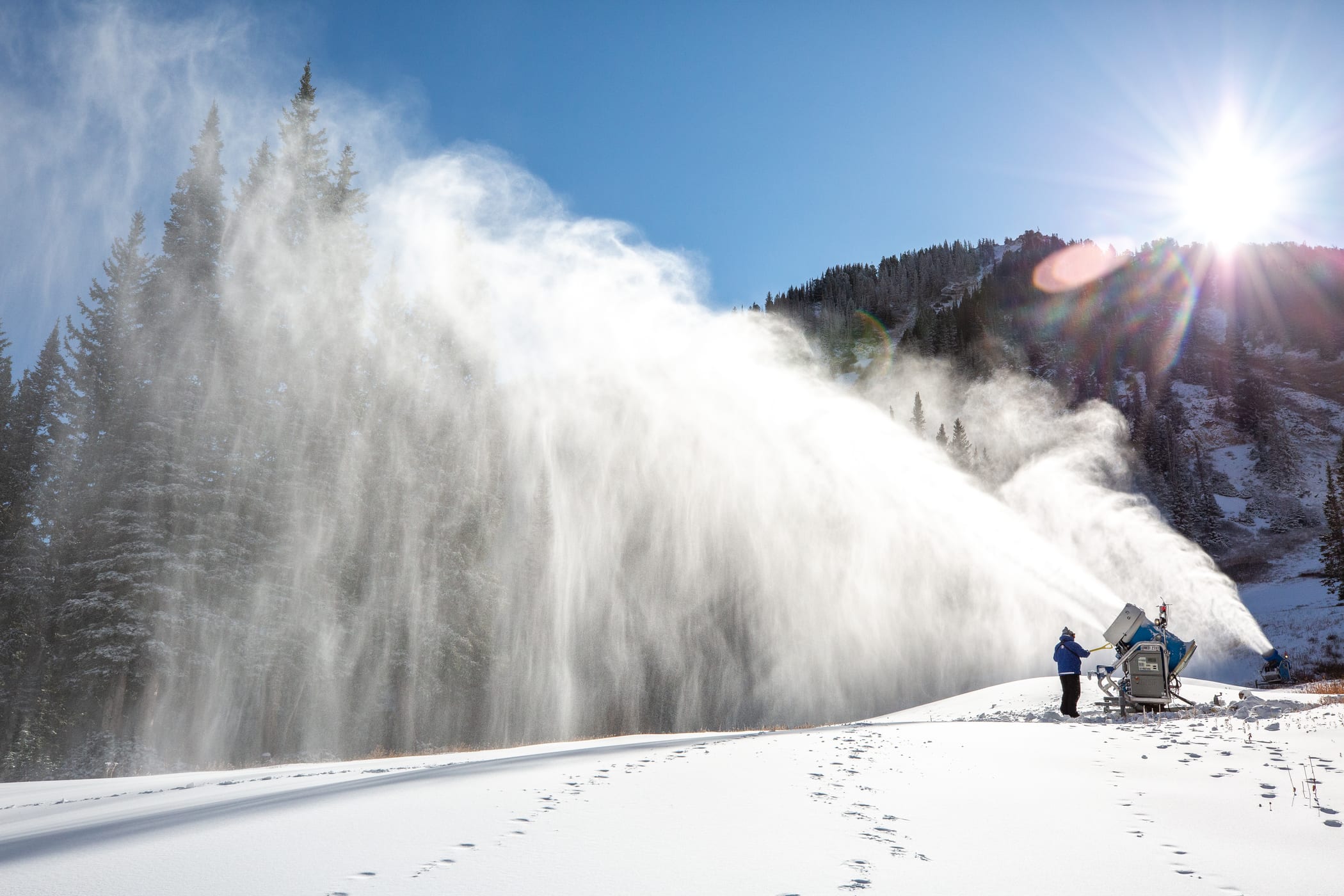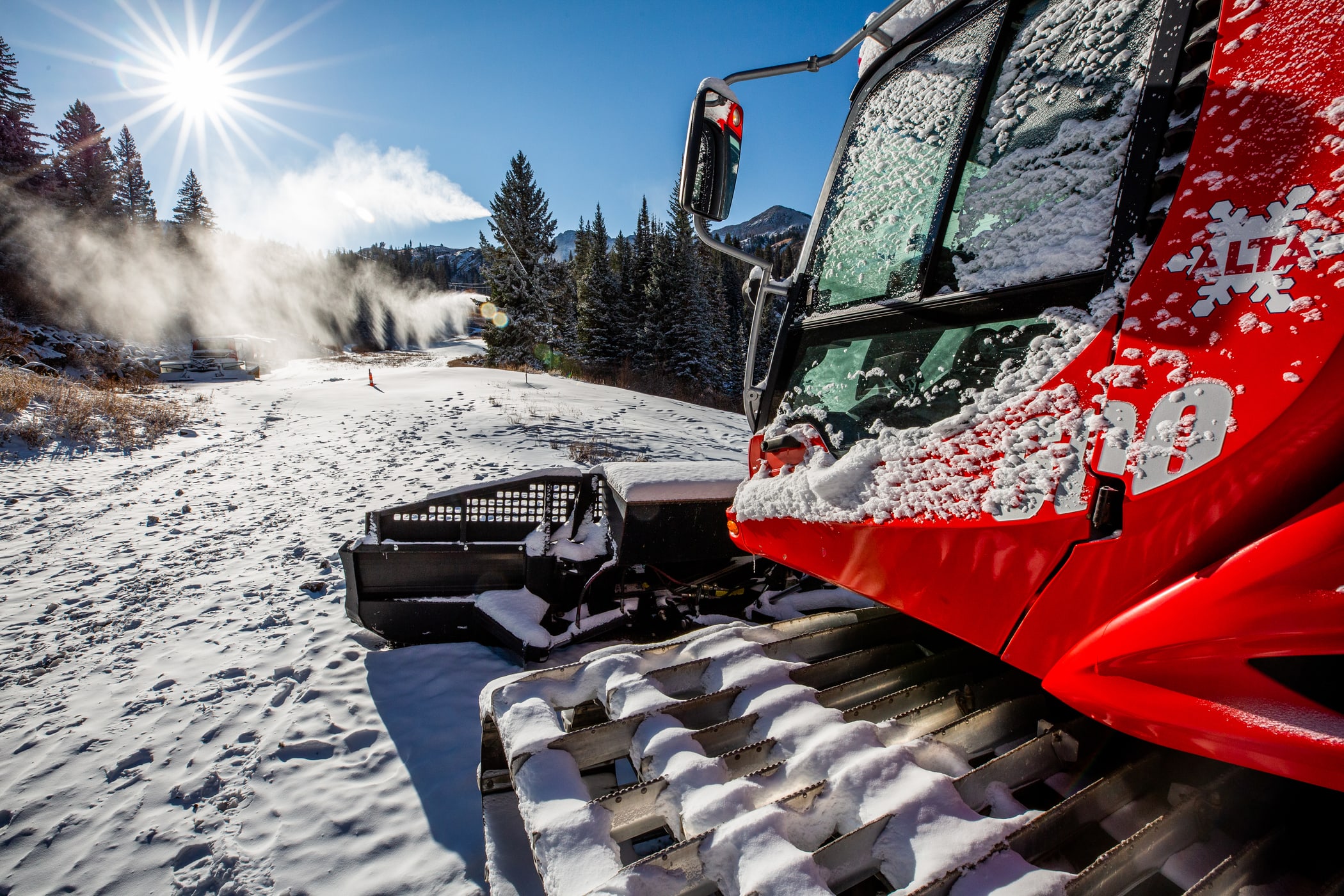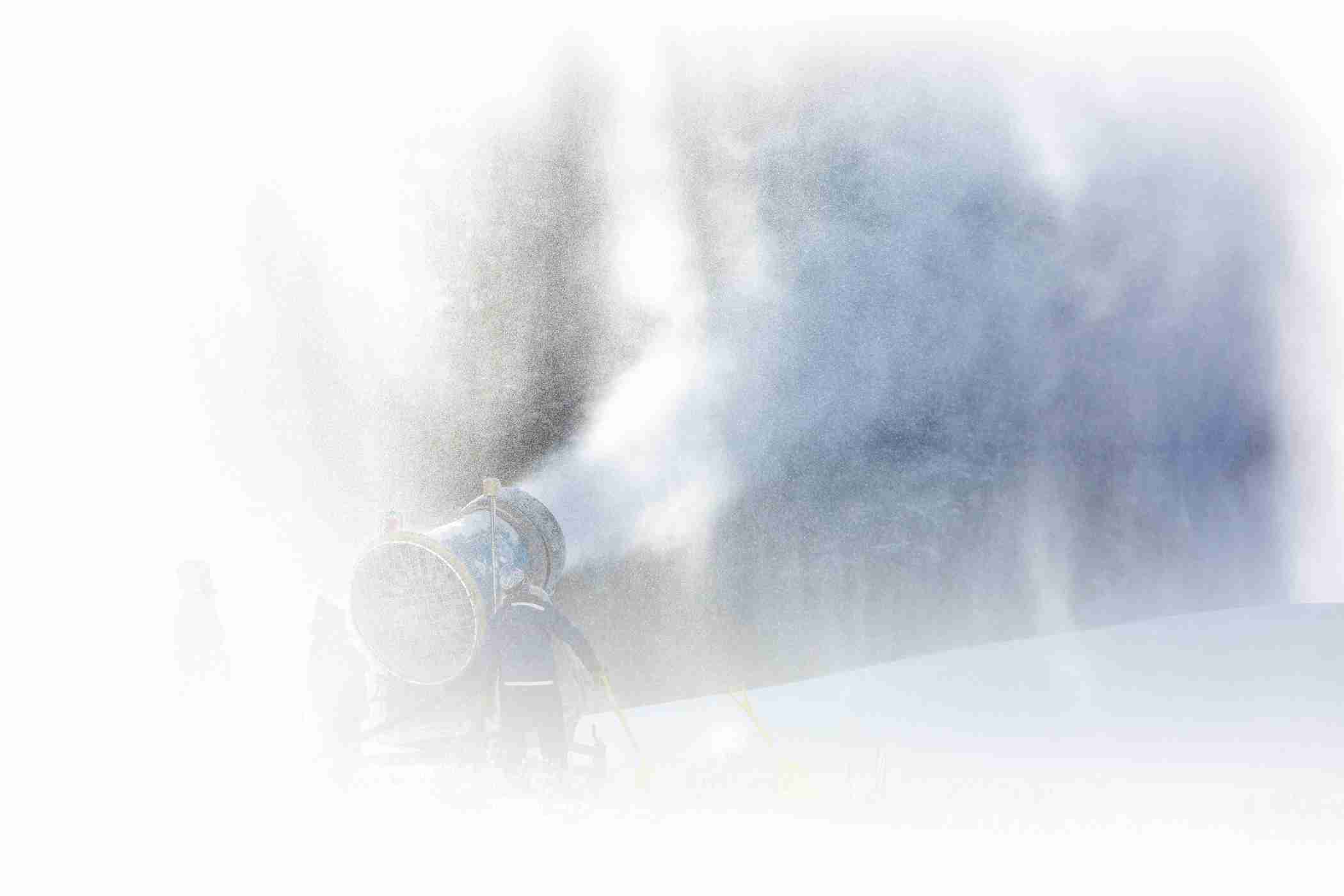The Art & Science of snowmaking at alta ski area.
While Alta Ski Area is known for its bountiful snowfall totals—annually averaging 548 inches of The Greatest Snow on Earth—we’re not afraid to utilize the latest technology in providing the best ski experience for our skiers. In addition to modern ski lifts, avalanche mitigation technology, a fleet of snowcats, Alta has incorporated snowmaking into mountain operations for the past thirty-five years, originally starting with portable snow fans before installing permanent snowmaking equipment.
Water + Compressed Air + Cold Air = Snow
The formula for making snow is unchanged: Water + Compressed Air + Cold Air = Snow. But the past three decades have ushered in new technologies that make snowmaking more efficient and precise than ever.
Alta’s current snowmaking operation is impressive. Starting in October, a complex system of hoses, pumps, chillers, lance guns and fan guns lay down a solid base of snow on Alta's slopes. A team of snowmakers is also working around the clock, when temperatures are cold enough, to create mounds of manmade snow. This manmade snow is then spread out by snowcats and groomers, laying down the base of our snowpack early in the season, so we can ski every inch of the 547” of snow that falls on our mountain.
As temperatures have increased and the climate has warmed, this system helps Alta stay slightly ahead of the curve. It certainly helps that Alta is dedicated to providing the best skiing experience for our guests. Instead of investing in a new summer roller coaster or golf course, Alta continues to reinvest in the sport of skiing, not the lifestyle. Come for the skiing. Stay for the skiing. Since 1938.
how does it work at Alta?
Snowmaking water is drawn from a variety of sources and pumped up the mountain to Cecret Lake which serves as a reservoir. A large holding container, such as a lake, allows for greater snowmaking output when it is really cold. When temperatures and humidity create the ideal wet-bulb temperature for making snow, water is gravity-fed to the water chiller and pumped back uphill to the guns placed strategically around Alta in high-traffic areas.
"... the ultimate goal of Alta's snow making efforts is to provide a reliable opening day from one winter to the next." — Buck Boley
The water is then pressurized, cooled and sprayed out into the cold air in a fine mist of snow particles. Fan guns send the snow particles high into the air, where they fall to the ground much like natural snow. Wand/stick/lance snowmakers are tall enough to let the newly-made snow particles fall to the slopes as snowflakes.

Snowmaking water is later recaptured as snow melts and makes its way back into Little Cottonwood Creek. Then the whole process starts anew.
Snowmaking is performed until Mother Nature is ready to take over, whenever that may be. In early snow years, the snowmaking crew is done well before the Christmas holiday. In lean years, we may take advantage of cool weather and long nights, making snow into January.
Who Does the Work?
All of Alta's snowmaking equipment is automated. Automation is the key, as guns continually self-adjust to changing temperatures. These constant adjustments provide greater efficiency and snow production while also ensuring that the "product" coming out the barrel is top-notch. This is very important to Alta and our skiers as we are known around the world for our natural, snow quality.
A crew of Alta employees is recruited to assist in the snowmaking process behind the scenes. As soon as temperatures are conducive to snowmaking, a team of brave employees work around the clock to keep the guns firing and snow stacking up. Working the day, swing, or night shift, these snowmakers do their best to stay warm, snowmobiling from snowgun to snowgun, monitoring and troubleshooting. With the right temperatures, snowguns can produce a mound of snow, known as whales, in a matter of hours. Snowguns need to be adjusted regularly to maximize snowmaking efficiency.
Groomers and snowcat drivers take over from there. Watch the Alta mountain cams page to see these snowcats and drivers working all hours of the day to keep the snow moving around the mountain. The cats battle with the whales, spreading tons of snow to high-traffic areas out of reach from the guns.

Snowmaking is not an easy job. The hours are long and the late-fall/early-winter environment is less than welcoming. Luckily, the snowmaking season at Alta is short, and these employees leave the job with a season pass and a new connection with the mountain. It's no secret that the snowmaking crew is home to some of the best skiers at Alta.
Glossary of snowmaking terms
- Atomizing - The process that takes place when compressed air and water are combined, creating small particles of water droplets that become snow.
- Bounce-On-Your-Sleeve - Machine-made snow particles will literally bounce off of a snowmaker's sleeve.
- Gunpowder - Fine, powder-like manmade snow
- Water Out the Barrel - An old-timey phrase used to delineate machine-made snow from all-natural snow
- Wet-bulb Temperature (temp + humidity = wet-bulb) - Wet-bulb temperature is used as a metric since it takes air temperature and relative humidity into account. The bulb temperature is always below the outside temperature. The damper the air, the less moisture it can absorb. The higher the atmospheric humidity, the colder it must be to turn the small water droplets into snow crystals. To start a snowmaking system a wet-bulb temperature of -2,5°C/27,5°F is required. If the atmospheric humidity is very low, this level can be reached at temperatures slightly above 0°C/32°F but if the air humidity is high, colder temperatures are required. Temperatures around freezing point are referred to as borderline temperatures or limit temperatures.[3] If the wet-bulb temperature drops, more snow can be produced faster and more efficient. - Wikipedia
- Whales - Giant mounds of machine-made snow that form near the base of snowmaking guns. The snow is allowed to settle for a period of time before being spread around the mountain via grooming snowcats.

Add Your Comment